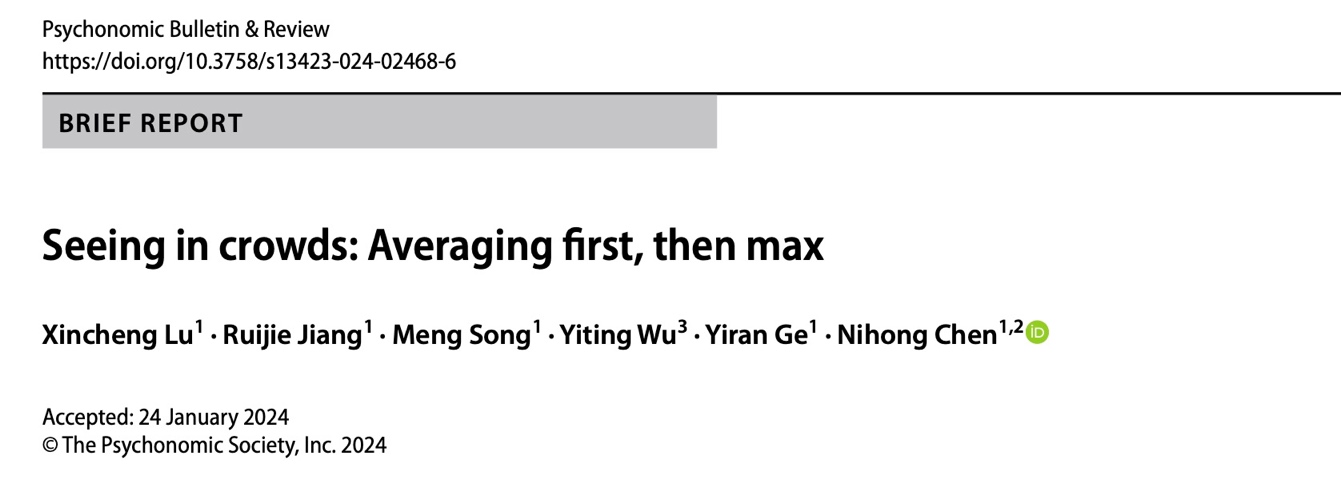University published a paper titled "Seeing in crowds: Averaging first, then max" in the international psychology journal Psychonomic Bulletin & Review, revealing information integration strategies in visually crowded scenes. Master's students Lü Xincheng and Jiang Ruijie from our department are co-first authors, with Associate Professor Chen Nihong as the corresponding author.

As an important bottleneck limiting object recognition in peripheral vision, the crowding effect is believed to result from excessive integration of adjacent information. To understand its cognitive mechanisms, participants in psychophysical experiments reported the orientation of central gratings under crowded conditions. The results showed that even when conscious perception of individual targets is limited under crowded conditions, participants could still make relatively accurate perceptual judgments based on a two-stage model. This study reveals the integration strategy in crowded scenes—after early-stage averaging operations, the perceptual system optimizes information utilization in the visual environment by selecting the maximum response in the late decision stage.

Figure 1: Two-stage Perceptual Model
The Avg-Max two-stage model predicts the distribution of participants' responses at different signal strengths. This model first averages the signals in the radial integration area along the fixation point, and then performs a maximum value operation on all signals.
Additionally, the experiment also examined the relationship between perceptual decisions and confidence. Results showed a dissociation pattern between confidence and perceptual decisions, suggesting that a unique subjective confidence calculation mechanism may exist.
This research was supported by the National Natural Science Foundation of China (31971031, 31930053) and the Science and Technology Innovation 2030 - "Brain Science and Brain-like Research" Major Project (STI2030-Major Projects, 2021ZD0203600).
Paper Information
Lu X., Jiang R., Song M., Wu Y., Ge Y., Chen N.* Seeing in crowds: Averaging first, then Max. Psychon Bull Rev (2024). https://doi.org/10.3758/s13423-024-02468-6

